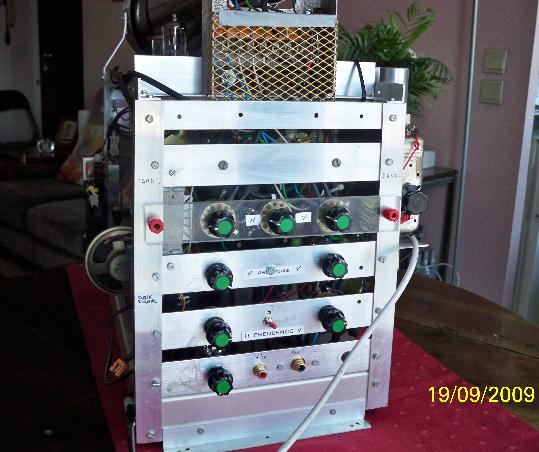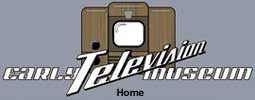

 |
 |
History
1938. In France, the television, although having made considerable progresses, remainded unaffordable to many people because of the high prices of the sets. In the United States, the situation is quite different. A very demanding market stimulates the large American companies such RCA, Du Mont or General Electric to produce in series several thousands of television sets. Those were somewhat expensive, featured in luxurious boxes but the riches thought that they must have television at home. Well structured programs were offered to the public and the sales increased regularly.
In France, it will be necessary to wait the end of world war II, to see an ambitious TV project arising for the new television. The televisual infrastructure left by the Germans at the end of the occupation of Paris in 1944, such as the Magic City studio and the Cognac-Jay installations, have been used then as foundations for the final starting of the French Television (R.T.F.) This cathodic television receiver, art deco style in wallnut plywood, is a close example to what existed on the US TV market at the end of the 30's.
By that time, the image's definition standard in the United States was 505 lines, therefore very close to the 625 lines that we have today in Europe. This receiver was designed according to a 1938 vintage schematic kindly provided by Peter YANCZER and include 19 tubes plus the 5BP4 kinescope, also provided by Peter Yanczer, a vintage electrostatic CRT, which requires darkness to provide an acceptable comfort of viewing.
The set has been designed to receive the main french analog 625 lines tv channels, without particular adaptation except the UHF tuner which is used as a converter
for the VHF 6AC7 amplifier.
Photos of the frames.
Front side with the loudspeaker (to be updated).
In 1946, enthusiastic people, actors and journalists, such as Pierre Sabbagh and Gilbert Larriaga, created a TV news program. By then, structured programs dealing with music, theater and shows are on the way. French companies, such as GRAMMONT and RIBET DESJARDIN, entered the French market by building and selling thousands of television sets.
Characteristics of the prototype

The bottom frame hold the time bases (tubes 2x6N7/2x6F8), the sync separator (6AC7),
the power tubes for picture (6F6), and for sound (6V6), the valves rectifiers (2xGZ34) and the main transformer.
Upper frame. Left side: the UHF tuner (EC88/EC86), image amplifier (3x6AC7) and detection (6AL5).
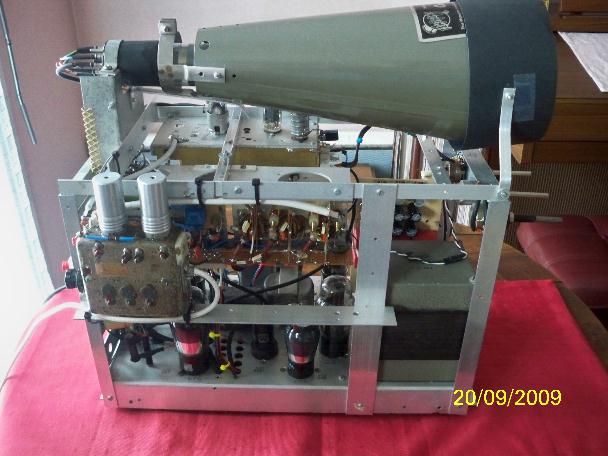
Upper frame. Right left side. Sound RF amplifier and AF preamp. (EF80, EBF80,6AV6).
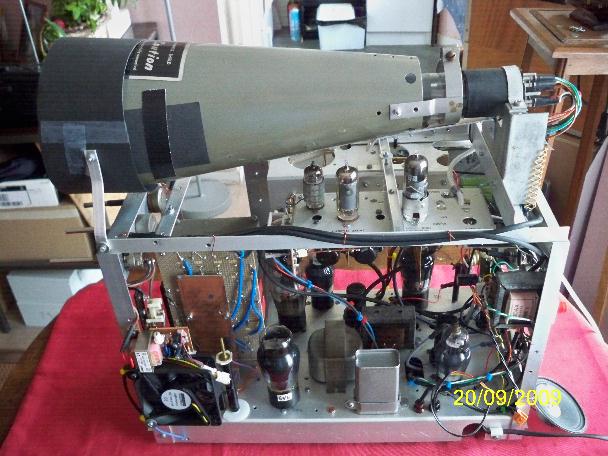
Close view of the sound module. At the leftmost seat the 2000 volts module.
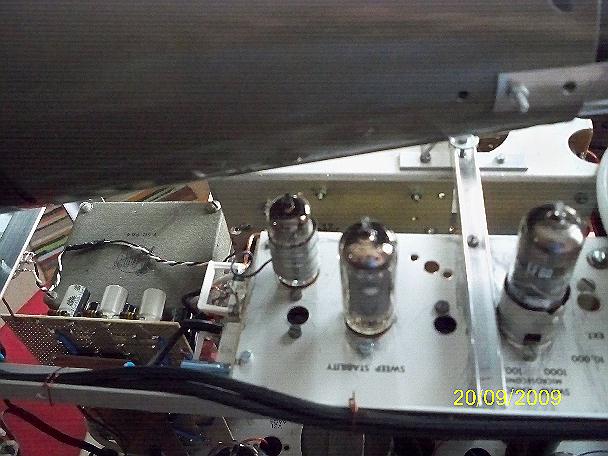
Back side: adjustment knobs (centering, focus, H & V picture size and frequency, Sync. level).
